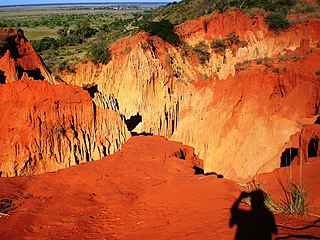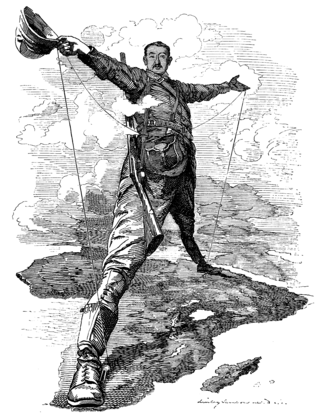
Modes of transport in Mozambique include rail, road, water, and air. There are rail links serving principal cities and connecting the country with Malawi, Zimbabwe and South Africa. There are over 30,000km of roads, but much of the network is unpaved.

Maputo Province is a province of Mozambique; the province excludes the city of Maputo. The province has an area of 22,693 km2 (8,762 sq mi) and a population of 1,968,906. Its capital is the city of Matola.

Gaza is a province of Mozambique. It has an area of 75,709 km2 and a population of 1,422,460, which is the least populous of all the provinces of Mozambique.

Zvishavane, formerly known as Shabani, is a mining town in Midlands Province, Zimbabwe. Surrounded by low hills, it lies 97 kilometres (60 mi) west of Masvingo, on the main Bulawayo-Masvingo road. Other roads lead from Zvishavane to Gweru, 121 kilometres (75 mi) north, and Mberengwa, 27 kilometres (17 mi) south-west. It is also on direct rail links to Gweru and Beit Bridge which then link up with Harare and Bulawayo in Zimbabwe and to Maputo in Mozambique, and Pretoria in South Africa. It has a private airport serving the city.

The Cape to Cairo Railway was an unfinished project to create a railway line crossing Africa from south to north. It would have been the largest and most important railway of that continent. It was planned as a link between Cape Town in South Africa and Port Said in Egypt.
The Beira Railroad Corporation, or CCFB, was a joint venture railway company that was responsible for operating the railway lines in central Mozambique. It was formed to reform the railway lines that run from the Port of Beira, Mozambique, originally linking to Zimbabwe, although it later also linked to Malawi.
Chicualacuala is a town located in the province of Gaza in Mozambique. The town is better known by this unofficial name than by its official toponym Vila Eduardo Mondlane.
Sango, also known as Nyala and Nyangambe, is a village and ward (commune) in Masvingo Province, Zimbabwe on the Mozambique border. The village supports the border post lying at the southern end of the Gonarezhou National Park.
Rutenga, is an important village in the province of Masvingo Province in Zimbabwe. It is the de facto capital of Mwenezi (District).

Portos e Caminhos de Ferro de Moçambique is a state-owned company that oversees the railway system of Mozambique and its connected ports.

Mapai is a small town in southern Mozambique. It is a semi-arid region, with a dry climate and vegetation dominated by mopane and galleries of ironwood.

Moamba District is a district of Maputo Province in southern Mozambique. Its main town is Moamba. The district is located in the western part of the province, and borders with Magude District in the north, Manhiça and Marracuene Districts in the east, the city of Matola in the southeast, Boane District and Namaacha District in the south, and with Mpumalanga Province of South Africa, in the west. The area of the district is 4,628 square kilometres (1,787 sq mi). It has a population of 56,335 as of 2007.
Railway stations in Mozambique include:
Railway station in Beitbridge include:

The history of rail transport in Mozambique began in the latter years of the nineteenth century.

Pretoria–Maputo railway, also called Delagoa Bay railway, Iron railway and Eastern railway, is a railway that connects the city of Maputo, Mozambique, to the city of Pretoria, in South Africa. It is 567 km long, in 1067 mm gauge. The Mozambican section, between Maputo and Ressano Garcia, is managed by the state-owned Mozambique Ports and Railways (CFM) company, and it is officially known in Mozambique as the Ressano Garcia Line; in turn, on the South African stretch, between the town of Komatipoort and city of Pretoria, the administration is done by the company Transnet Freight Rail.

Beira-Bulawayo railway, also called Machipanda railway, Beira-Harare-Bulawayo railway and Beira railway, is a railway that connects the city of Beira, Mozambique, to the city of Bulawayo, in Zimbabwe. It is 850 km long, in a 1067 mm gauge.

Sena railway, also called Shire Highlands railway, Dondo-Malawi railway and North-South Malawi railway, is a railway that connects Dondo, Mozambique, to Chipata, in Zambia. It is c. 1000 km long, in a 1067 mm gauge.

Goba railway, also called Swaziland-Maputo railway and Matsapha-Maputo railway, is a railway that connects the city of Maputo, Mozambique, to the city from Matsapha, in Eswatini. It is 466.8 km long, in a 1067 mm gauge.














